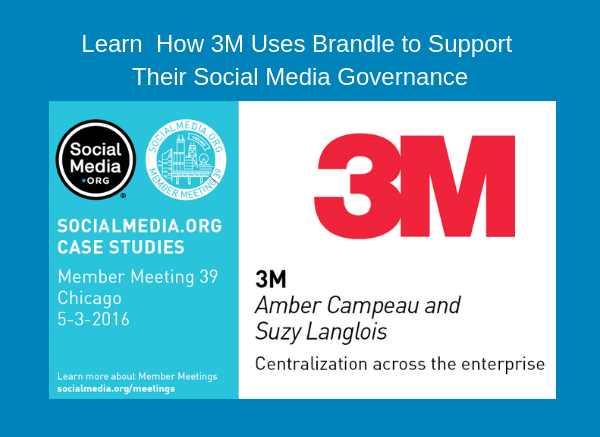 January is always an excellent time to conduct the annual corporate social media and web presence audit. Accomplishing this key governance task early in the year allows the global digital team members to re-set goals on the most active corporate channels, as well as clean-up stale and rogue accounts that have popped up during the previous year (especially over the holiday period).
January is always an excellent time to conduct the annual corporate social media and web presence audit. Accomplishing this key governance task early in the year allows the global digital team members to re-set goals on the most active corporate channels, as well as clean-up stale and rogue accounts that have popped up during the previous year (especially over the holiday period).
If you have never conducted a corporate social media audit, then now is the time to start! There are many reasons that social media presents significant risks to a company: brand reputation, sales, and risks highlighted in our post 7 Social Media Security Issues Your Business Faces. Proactively conducting a social media audit is not just a best practice, but an essential risk management priority.
What is a Social Media Audit?
As the term suggests, a social media audit is a process of identifying, categorizing, assigning and determining key actions on all brand points-of-presence (POPs) on social media networks.
Corporate digital and marketing managers (as well as executives) are often shocked to learn that their social media footprint is ten times larger than they projected. Typically, there are dozens (if not hundreds) of accounts that were set-up in the past but are now sitting dormant. Plus there are often accounts set up by customers or even competitors that are using your brand’s name (and not always kindly). What’s more, cyber criminals and counterfeiters are turning their attention to social media in order to create fraudulent look-a-like accounts that steal data, deploy malware, or sell fake goods.
So what is the process for conducting a sound social media audit?
Four Phases
Essentially, there are four phases of a comprehensive social media audit, and each one is vital — which means scaling back or cutting corners should not be considered. These phases are: Discovery, Network Audit, Brand Presence Audit, and Content Audit. If you are in a regulated business, add a compliance review during each phase.
- The Discovery phase involves scouring the web to find social media accounts: corporate-owned, third-party, and fraudulent. This process is where you will be building an inventory of these assets. Keep a spreadsheet on each type of asset (corporate vs third-party like employees, communities, advocates, and fraudulent). Be sure to include all of the network generated pages such as Facebook and Google+ Place Pages. These place pages are yours and can present significant brand risk. If you use a discovery engine like Brandle, then this is automatically accomplished for you, but it can be done manually.
- The Network Audit phase involves reviewing each social media network and determining how they fit into your business’ overall social media strategy. You may find that one network has become old and stale and you prefer to shut-down the accounts on this network. (Be sure to keep your claim on your brand names, in this case). And you may find that new networks have risen and should be considered as important new channels to develop. Also assess if the network has achieved your business goals, and if not, update your goals and track progress in this year's content efforts.
- The Brand Presence Audit phase. This phase focuses on the profile content that is presented in the about, description, impressum, avatars, cover art, referenced website, and any other category that is explaining what the account is all about to the target audience. This is the Brand Presence information and NOT the content stream. All data should be reviewed quickly so you can assess which accounts should be kept active, merged, shut-down, reported as fraudulent, and other actions. For those that need to be shut down, you can set aside to conduct that process as a project. Fraudulent accounts should got through your legal process or your network account manager. Then the final project in this category is to take those that you intend to keep active (or to merge), review the profile content with focus and verify that they’re on-brand, on-message, and compliant. Also, be sure to confirm that the reference websites are still the correct link (we often see this link lead to a 404 when a web page changes).There are aspects to the profile meta data that are important as part of the presence audit and those are: likes, follows, and posting schedule (how frequently the account owner posts).
- The Content Audit phase is the final phase to review once the rest of your audit is completed. The majority of corporations already focus on content strategy and engagement, so you should have a fairly clean slate. The one area that needs a closer review are the accounts that are in a regulated business (especially the employee accounts that are not managed by corporate). A content compliance review for these accounts is important. With the data collected, you can then see where you should focus your training efforts for employees on social media content compliance.
About the Brandle Presence Manager
The Brandle Presence Manager is a web presence and social media security SaaS that enables you to effectively, efficiently and comprehensively discover, inventory, monitor and report on your web and social media presence. Once the Brandle Presence Manager discovers a new point-of-presence (POP), you simply add it to your “living inventory” so it can be properly monitored and managed. What’s more, the solution automatically updates the new entry if any profile data changes, such as audience size, posting dates, etc.
To learn more, schedule a guided demo of the Brandle Presence Manager today:









